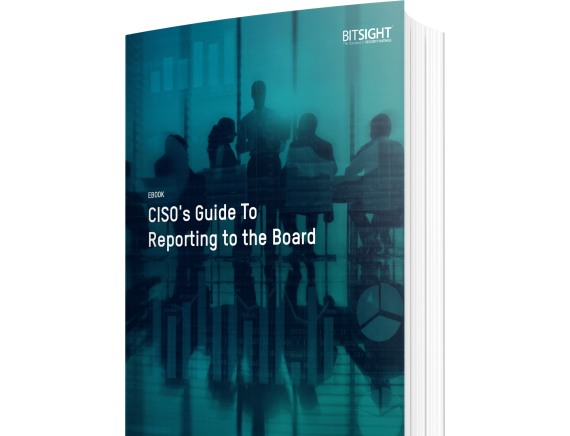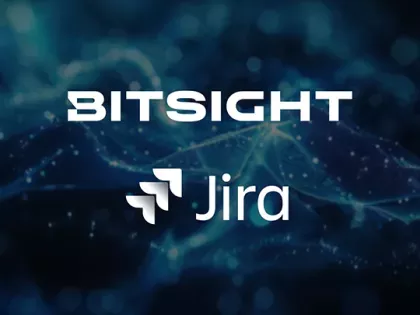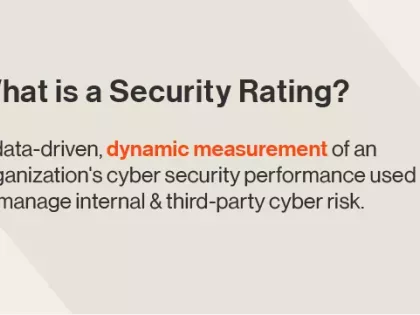It’s important to make sure that your report is tailored to the real world business outcomes the board will care about. Download this guide to learn best practices and tips for reporting cybersecurity to the board.
3 Ways CISOs Can Brief Executives and Board Members on Cybersecurity IT Governance

Cybersecurity incidents are on the rise, and the monetary setbacks for victims are considerable. The average cost of a data breach in the U.S. has soared to nearly $8.6 million, and these costs are expected to grow by 15% over the next five years.
Naturally, this has led to increased scrutiny from senior executives and board members resulting in an increased focus on IT governance, particularly as it pertains to how IT teams are handling cybersecurity. Executives want to be sure that the actions they’re taking are in alignment with business objectives – in this case, keeping the organization’s data assets protected and employing the right cybersecurity tools and practices. Because of this heightened oversight, CISOs must find ways to effectively brief business leaders on their organizations’ IT governance status and the impact of cybersecurity investments.
As a CISO, you need to assess and report on cyber risk in a language that makes sense to the non-technical stakeholders and the board in order to drive strategic conversations about cybersecurity ROI.
Here are three best practices for doing just that.
1. Use security ratings to communicate IT governance status
To effectively report on cybersecurity performance, you must first measure it. But as your organization’s digital footprint expands – on-premises, in the cloud, and across geographies and business units – understanding the security posture of hundreds of thousands (if not millions) of digital assets isn’t easy.
To do this, you would typically conduct a security audit or assessment. But these can be costly and time-consuming and only capture a point-in-time view of cyber risk. Instead, a more effective way to assess cyber risk is to continuously monitor your digital ecosystem using a tool like security ratings.
Security ratings are data-driven measurements of enterprise-wide security performance. Derived from objective, verifiable information, ratings help assess risk and the likelihood of a data breach based on risk factors such as open ports, misconfigured software, malware infections, exposed credentials, and weak security controls.
Because findings are presented as a numerical score – much like a credit score – they allow you to convey security risks in straightforward business terms. This no-nonsense approach helps non-technical stakeholders understand your organization’s cybersecurity readiness and shows you are taking the right actions to reduce risk.
2. Quantify cyber risk in financial terms
Another way to cut through the technical jargon and resonate with executives is to analyze and quantify cyber risk in terms of its financial impact.
With Bitsight Financial Quantification, you can simulate your organization’s financial exposure across hundreds of thousands of cyber events, including ransomware, denial of service, regulatory compliance issues, supply chain attacks, and more.
By transforming the technical side of cybersecurity into financial language, you can guide leadership discussions around cyber risk management, prioritize cybersecurity decisions, and justify new technology investments. By drilling down and diagnosing the underlying causes that impact financial exposure, it’s easier than ever to demonstrate how that exposure changes as you invest in controls to improve your organization’s security posture.
Furthermore, unlike traditional financial quantification methods that rely on consulting engagements or long data collection processes, Bitsight empowers you to assess cyber risk as it evolves. Financial Quantification is available on-demand, easily repeatable, and can be run without adding headcount.
3. Report effectively to executives
Effective communication is key to IT governance because it brings cybersecurity transparency to the decision-making process. The board and C-suite need to know how the company could be affected by its cybersecurity posture.
We already know about the importance of conveying information about cyber risk in business and financial terms, but some data points are more important than others. For instance, board members may not know what it means if you say “the intrusion detection system experienced 500,000 hits in the past quarter.” It’s more effective to say “last quarter we were able to successfully block hundreds of thousands of attempted intrusions, that would have resulted in substantial data loss.” In short, you need to be concise with your explanation and show them how the metric at hand impacts the organization’s digital health. According to a Forrester Consulting report, security ratings are a more appropriate metric than the number of malware incidents or phishing emails your controls have blocked. Why? Because they are risk-focused, objective, and outcome-based.
You can use security ratings to provide context around your cybersecurity metrics, too. Context helps tell a well-rounded story on the impact that security performance can have on the business. For example, security ratings can tell you how many vulnerabilities you have in your digital ecosystem and their severity – i.e., their likelihood of contributing to a breach. You can also use ratings to benchmark your organization’s security performance against its peers and display the results as a comparative metric, which gives you and your executive team a better perspective on how well (or not) your company is doing in relation to others.
These and other cybersecurity KPIs can help you make a case for how cybersecurity impacts the business directly. And because they can be captured over time, you can use them to demonstrate cause and effect.

Focus on continuous improvement
Board- and executive-level involvement in IT governance is a positive for any organization. It increases business performance, helps align IT with corporate goals, and mitigates the risk of a financially devastating cyberattack.
But IT governance is not a one-and-done process. Like cybersecurity, it’s an activity that requires continuous improvement. It’s important to leverage data insights and facilitate open communication to ensure that executives have the framework they need to help them understand cybersecurity risk and develop strategies to reduce that risk.


